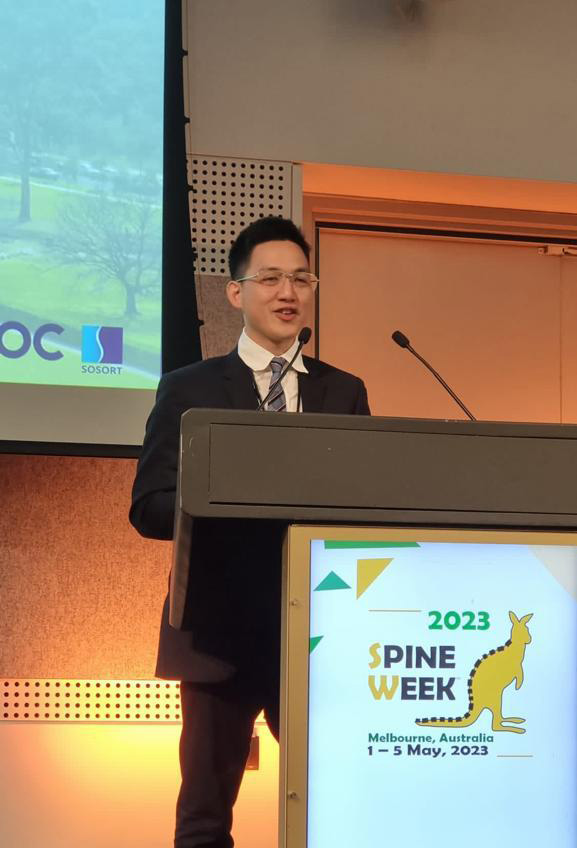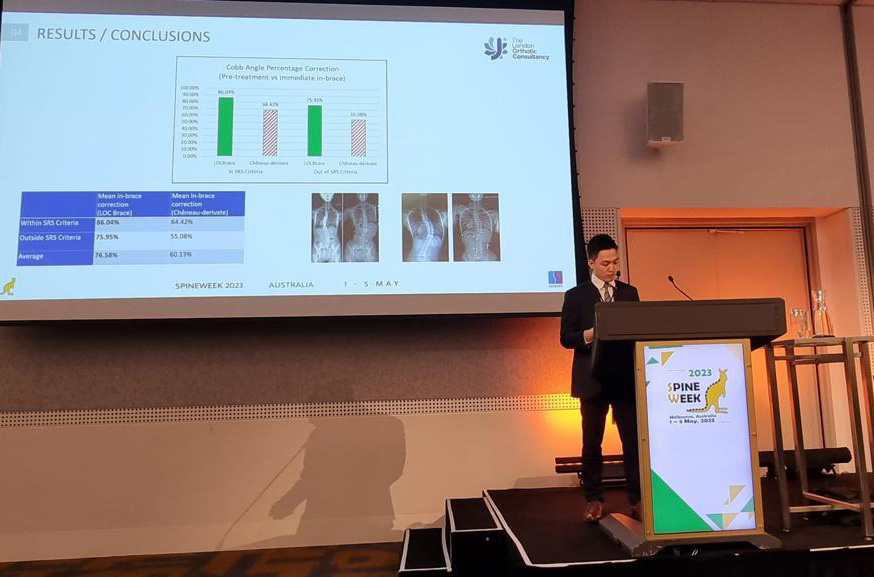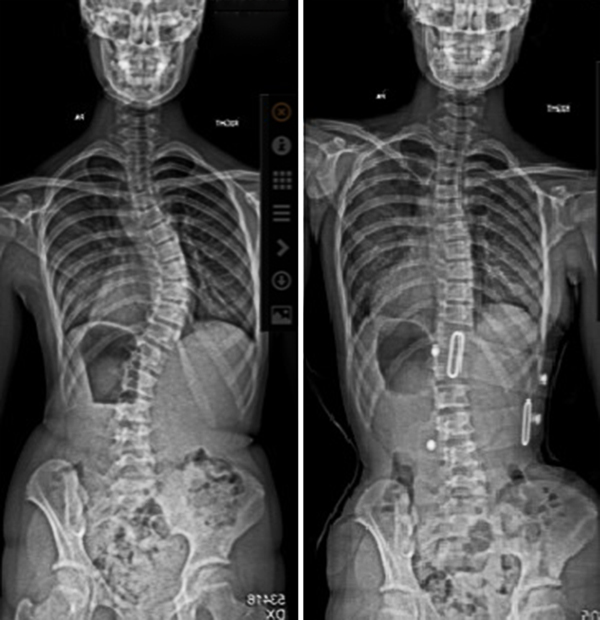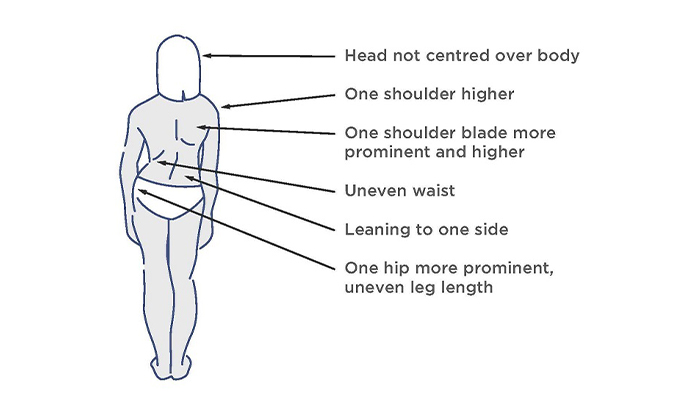
Jack Choong presents LOC's Scoliosis Brace findings at SOSORT's Spineweek Congress
15 May 2023
Jack Choong, senior orthotist at the London Orthotic Consultancy recently presented at SOSORT’s 2023 Spineweek Congress in Melbourne, Australia earlier in May.
It was a significant moment for the team as we delivered three presentations at the scoliosis and spine health conference. These were based on our own clinical research and treatment outcomes with the LOC's Scoliosis Brace since its launch in January 2022.
It was a privilege to be able to present our findings to an audience that included some of the leading experts in the field of scoliosis spinal health. This achievement is a testament to the hard work of our orthotists and our commitment to delivering excellent outcomes for our scoliosis patients. Particularly lead scoliosis clinician Anna Courtney and director Sam Walmsley who co-authored the papers.
When it comes to treating scoliosis, our focus has always been on achieving the best outcomes for each patient: reducing Cobb angles, reducing discomfort, and avoiding the need for surgery.
Our ethos is focused on monitoring and using data and feedback from our patients to improve the brace. This allows us to make tweaks to our braces continuously, measuring the outcomes and making more improvements. In short, our scoliosis brace seeks to straighten and correct the spine as much as possible while still being comfortable to wear. The data that we shared at SOSORT demonstrated that we are achieving an average of over 75% correction with our three-dimensional brace.
By focusing on innovative treatment and exploring new approaches, we hope to continue making strides in improving the lives of patients with scoliosis. Not just in the UK, but worldwide.

Jack Choong presents data comparing LOC Scoliosis Brace performance against other Chêneau-derivative braces at SOSORT
Jack Choong says “It has been an absolute pleasure to be able to take part and contribute to the SOSORT 2023 conference this year. Scoliosis is a condition that affects around 0.5 to 5.2% of adolescents in the UK. At over 8 million people, that's a lot of patients who we can work towards making their quality of life and function significantly better.”
We are very pleased to announce that we have also received an invitation from the Scoliosis Research Society to present at their 58th Annual Meeting from the 6 to the 9th of September 2023 in Seattle, Washington, USA.
We will be sharing links to our clinical research in due course. We look forward to developing these studies and advancing our clinical process and algorithms, all to continue providing the best evidence-based treatments for our patients.

A 14-year-old patient with 54 degree Cobb angle before treatment with the LOC scoliosis brace. In-brace scan after 5 weeks shows the curve reduced to 14 degrees.
See more examples of how the LOC Scoliosis Brace provides over-corrective treatment for adolescent idiopathic scoliosis curves.
Especially in young people, spotting the early signs of scoliosis is important – as is seeking early treatment. These are the warning signs to look out for:

Visual signs of Scoliosis
You can find out more about the visual signs of scoliosis here.
If your child has recently been diagnosed with scoliosis or if you have concerns about your child’s spine and you would like to find out more, read more about LOC’s bracing treatment here.
Most of the patients LOC see have what is termed idiopathic scoliosis - which means that there is no known medical cause for the condition. What we do know is that scoliosis tends to occur during periods of rapid body growth and adolescents account for over 80% of all diagnosed cases in children.
The LOC Scoliosis Brace is a 3D, hypercorrective, Cheneau-Gensingen derivative brace, known as one of the most corrective and modern scoliosis braces available in the UK. It is designed to:
The brace is entirely unique and tailored to the patient’s spinal curve pattern, ensuring optimal skeletal correction while prioritising comfort.
Unlike traditional braces, it opens from the front for easier self-application and maintains a low profile under clothing.
The LOC Scoliosis Brace is worn 22 hours a day (including nighttime) and works in conjunction with Schroth-based therapy for maximum results.
We are pleased to offer a free-of-charge, virtual assessment should you wish to be screened for scoliosis. If we feel a referral to an Orthopaedic Consultant is warranted, we recommend a consultation at The Wimbledon Clinic, Parkside with Mr Darren Lui, Mr Jason Bernard or Mr Tim Bishop. The consultant would arrange the imaging as required. Obviously, you can also seek advice from your family GP.
The operation used to treat severe scoliosis curves is typically spinal fusion surgery; a major procedure that involves moving muscles and realigning the skeleton into place. The curved, deformed vertebrae are fused together into a single bone, putting metal screws and rods into the spine to help straighten it. Surgery typically lasts between 4 and 8 hours depending on the severity of the curve. Bone graft is then taken from other parts of the body and used to cover the implants.
Following the operation, it is necessary to spend around a week in intensive care before returning home and the first few days are often uncomfortable. Most adolescents can expect to return to school from 2-4 weeks following surgery, but pain medication may be required up to 6 weeks following. A full recovery from the procedure can take up to a year, as it can take that long for the spine to heal fully.
Spinal fusion surgery causes the fused portion of the back to become permanently stiff, as a result, returning to sports that require large amounts of flexibility (ballet, yoga, gymnastics, dance) or contact (rugby, football, karate, hockey) may take longer.